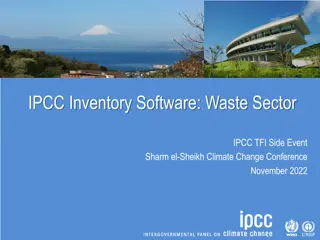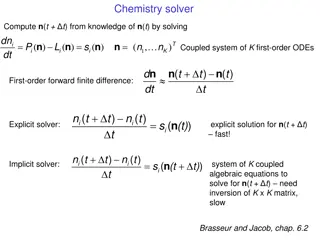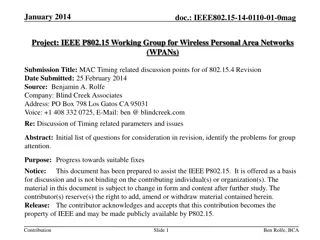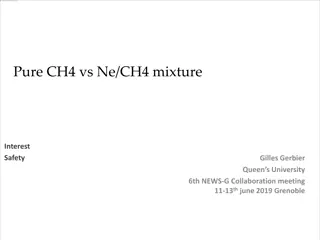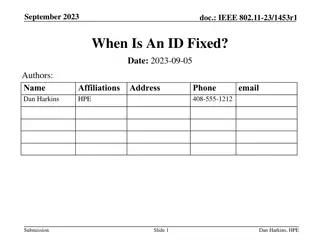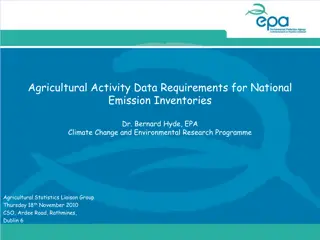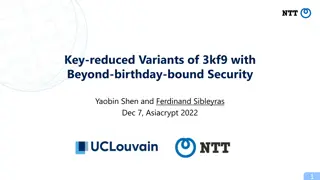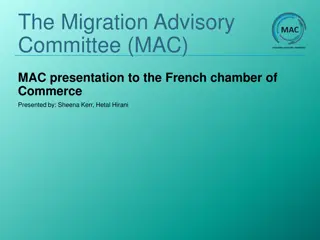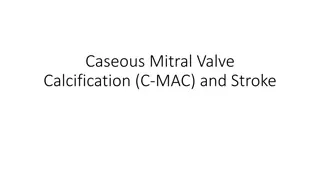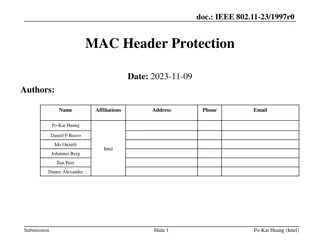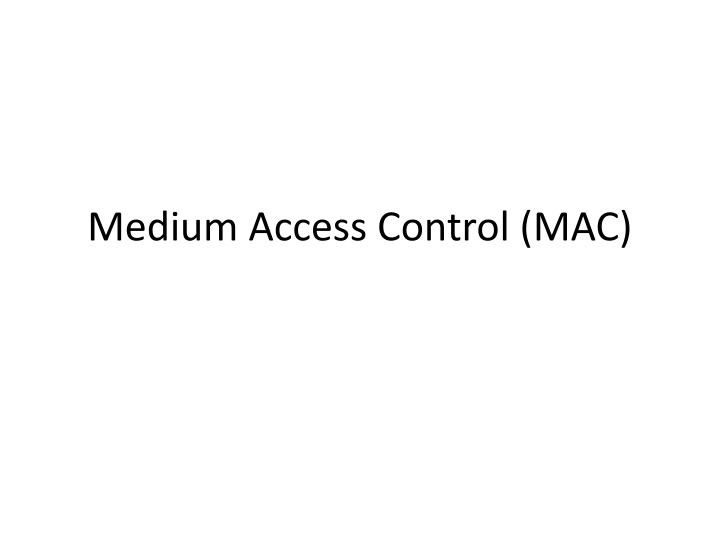
MAC Protocols for Efficient Network Communication
Learn about Medium Access Control (MAC) protocols such as ALOHA and CSMA, which help manage broadcast channels where multiple sources compete for access. Discover how these protocols address issues like collisions and throughput optimization in shared network environments.
Download Presentation

Please find below an Image/Link to download the presentation.
The content on the website is provided AS IS for your information and personal use only. It may not be sold, licensed, or shared on other websites without obtaining consent from the author. If you encounter any issues during the download, it is possible that the publisher has removed the file from their server.
You are allowed to download the files provided on this website for personal or commercial use, subject to the condition that they are used lawfully. All files are the property of their respective owners.
The content on the website is provided AS IS for your information and personal use only. It may not be sold, licensed, or shared on other websites without obtaining consent from the author.
E N D
Presentation Transcript
MAC Medium Access Control (MAC) is concerned about broadcast channel, also known as multiaccess channels and random access channels. multiple sources may compete for a shared channel. Two properties: When one station transmits, anyone can hear (something) When more than station transmit, collision (data lost) Example: classic Ethernet, current WiFi. The issue is to determine who gets the channel. In a point-to-point link, this problem does not exist. A point-to-point protocol (e.g. Sliding-window protocol) can run on top of the MAC layer.
A simple MAC protocol The simplest: Get data, send immediately. But, what if there is collision? Immediately resend? Wait for a constant time and resend? This works. Is it good enough? There is a performance issue. We want a protocol that is fair to all stations while achieving as high a throughput as possible. High load: high throughput (frames need to be able to get through). Low load: low delay (don t want long arbitration).
ALOHA Each station sends when data is available. Each station can detect if the frame it sent collided with frames from other stations. If yes, wait for a random time, resend.
ALOHA What is the performance likely to be? In other words, if we plot a curve where the x axis is the offered load and y axis is the throughput, how would you expect it to be?
ALOHA What is the performance likely to be? In other words, if we plot a curve where the x axis is the offered load and y axis is the throughput, how would you expect it to be? At low traffic load, everything will get through. At high traffic load, very few frames can get through.
Slotted ALOHA Time is divided into slots and each station sends at the beginning of time slots. Intuitively, why this is better? Because at least nodes are trying to coordinate with each other. Can we do even better than that? What other coordination can you do?
Beyond Aloha Carrier Sense Protocols CSMA Carrier Sense Multiple Access Listen before send, a basic courtesy Why call it carrier?
Carrier Sense 1-persistent Station listens to the channel, if busy, waits until idle and send immediately. If collision, waits for a random time and starts over again. Better than ALOHA because at least if someone is sending, won t send Problems Two stations wait for channel to be idle and will send at the same time If propagation delay is long, B does not know A has started sending
Carrier Sense Non-persistent If no one else is sending, send. Else, wait for a random time and check the channel again. Does not constantly monitor the channel, so reduces the chance for collision p-persistent For slotted channel If channel is idle, send with probably p, defers to next slot with probably q = 1-p (try again) If no idle, wait for next slot and try again
CSMA with Collision Detection CSMA/CD Improves CSMA by listening to the channel and abort immediately when there is a collision.
Collision-free protocols bit-map method. control frame contain N bits, each station send 1 bits to indicate whether it has a frame to send at the end of the control frame, every station knows all the station that want to send, the station can send in order. example: station 0 1 2 3 0 1 2 3 sync 0 1 0 1 frame 1 frame 3 sync 1 0 0 0 frame 0 Performance: At high load: channel efficiency: d/(d+1). At low load: an average of N/2 for the previous control frame and another N bits for the current control frame. Channel efficiency: d/(d+N)
Collision free protocol Binary countdown Each station sends the address bits in some order (from highest order bit to the lowest order bit). The bits in each position from different stations are ORed. As soon as a station sees that a high-order bit position that is 0 is overwrite by 1, it gives up. Eventual, only one station (with largest station number among all the competitors) gets the channel. example: station 2 (0010) 0 (give up) station 4 (0100) 0 (give up) station 9 (1001) 1 0 0 (give up) station 10 (1010) 1 0 1 0 (finished address, send data) OR 1 0 1 0 Performance: channel utilization rate: d/(d+log(N)) for high load log(N) bits delay for low load. Contention field can serve as the address field.
Collision free protocols Token pass There is only one token in the network The token is passed through every node in the network. Only the node that has the token can transfer data.
Limited Contention Protocols Collision based protocols (ALOHA,CSMA/CD) are good when the network load is low. Collision free protocols (bit map, binary countdown) are good when load is high. Can we combine their advantages -- limited contention protocols? Behave like the ALOHA scheme under light load Behave like the bitmap scheme under heavy load.
Limited contention protocol adaptive tree walk protocol trick: partition the group of station and limit the contention for each slot. Under light load, every one can try for each slot like aloha Under heavy load, only a small group can try for each slot How do we do it? treat stations as the leaf of a binary tree. first slot (after successful transmission), all stations (under the root node) can try to get the slot. if no conflict, fine. if conflict, only nodes under a subtree get to try for the next one. (depth first search)
Adaptive tree walk: an example 0 2 1 3 6 4 5 D A B C* E* F* G H* Slot 0: C*, E*, F*, H* (all nodes under node 0 can try), conflict slot 1: C* (all nodes under node 1 can try), C sends slot 2: E*, F*, H*(all nodes under node 2 can try), conflict slot 3: E*, F* (all nodes under node 5 can try), conflict slot 4: E* (all nodes under E can try), E sends slot 5: F* (all nodes under F can try), F sends slot 6: H* (all nodes under node 6 can try), H sends.
Adaptive tree walk Low load: like Aloha High load? What is the channel efficiency without collision detection? Can improve by searching at level i (instead of from the root) using the estimated number of stations that want to send.
Classic Ethernet (802.3) Physical layer Shared medium: one machine sends, all can hear. More than one machine sends, collision. Thick Ethernet: cable like a garden hose Thin Ethernet: smaller, shorter, more flexible cable Design for 3-10Mbps Using repeaters to allow multiple segments No more than 4 repeaters and 2.5km between any pair of transceivers.
Ethernet (802.3): MAC 1-persistent CSMA, CD, and binary exponential backoff Carrier sense: station listens to channel first. 1-persistent: If idle, station may initiate transmission Collision Detection: continuously monitor channel and if collision, abort transmission immediately. A transmitting station detects more energy than it sends, considers a collision, and sends a jam signal to warn others If collision, when to resend? To determine the back-off time, use binary exponential backoff : Each time slot is 51.2 us (How does this number relate to the Ethernet Spec? 10 Mbps, 2500 meters, 4 repeaters?) First collision, retransmission interval = random number between [0,1] Second collision, interval = random number between [0,3] kth collision, interval = random number between [0, 2k-1] upper bound 1023 slots. Give up after a maximum number of tries.
Why binary exponential backoff Why not pick a random number from a fixed interval? Why a fixed small interval not good? Why a fixed large interval not good?
Binary exponential backoff The binary exponential backoff is basically how a station uses locally observed information to infer the state of the network and to take the best actions.
802.3 http://www.erg.abdn.ac.uk/users/gorry/course/lan-pages/csma-cd.html
Problem In an Ethernet, suppose there are three stations very close to each other, A, B and C. Suppose at time 0, all of them have a frame to send, but the medium is busy. After the medium is free (for the inter-frame gap, 9.6us in some Ethernet), A, B, and C will all send, which results in a collision. They will perform the binary exponential back-off algorithm. What is the probability that the next transmission is again a collision? a) 2/3. b) 3/4. c) 5/8. d) None of the above.
Problem In an Ethernet, suppose the medium is currently busy, and there are three stations A, B, C, each with exactly one frame to send. When all three frames are sent successfully, which of the following statements is true? a) There were at least 2 collisions. b) There were at most 3 collisions. c) There were at least 3 collisions. d) None of the above.
Ethernet Frame Format (a) DIX Ethernet, (b) IEEE 802.3
Minimum Frame Size DIX Ethernet frame size ranges from 64 bytes to 1526 bytes. For channel efficiency, do we want large or small frames? Why small frames? Why minimum frame size for Ethernet (64 bytes) ?
Minimum Frame Size Why a minimum frame size is needed? Ethernet thinks that a frame goes through if there is no collision. The key is that you should be still transmitting when being aware of the collision, because if you finished before the collision, when the collision notifying signal comes, you might think it is for some other people s frame. How long does it take for a station to make sure that there won t be any collision?
Minimum Frame Size So, if maximum one-way delay is t, the minimum frame size should be at least 2t * bit_rate. 2t is about 50us (2500m + 4 repeaters) So the minimum frame size of 10M Ethernet is 512 bits. What if the speed goes up? E.g. 100Mbps Ethernet?
Minimum Frame Size What if the speed goes up? 100Mbps Ethernet? Two options: reduce network size, increase minimum size 100 Mbps Ethernet: 200m instead of 2500km
Problem Hypothetically, suppose it turns out that there cannot be more than 8 stations in any Ethernet. Which of the following statement is true? a) The minimum size of the Ethernet frame can be significantly reduced. b) The back-off algorithm should be modified. c) Both of the above. d) None of the above.
Wire LANs 802.11 Started in the mid 1990 s Goal: connecting laptops to the Internet Operates in unlicensed bands and not (expensive) licensed spectrum Environmental concerns Radio signals affected by the weather Signals bounce off of objects resulting reception following multiple paths and fading of the signal Bandwidth ! 802.11b: rates up to 11 Mbps 802.11g : rates up to 54 Mbps (OFDM modulation scheme introduced) 802.11n: 300 Mbps 802.11ac: 7,000Mbps
Two modes of operation Using an Access Point which connects to the (wired) internet As an Ad Hoc network communicating with other mobile devices without an access point.
Properties of wireless communications (.vs. wired LANs) When a station is sending, it cannot hear other stations No collision detection A station can only do either sending or receiving, but not both.
Properties of wireless communications Signal decays very fast with the distance Received signal is much fainter than the transmitted signal. When a station is sending, you cannot assume all stations can hear the medium is busy. A B C
Properties of wireless communications If received signal having power P means that you can decode the data, it may be true that at power P/2 you can realize that there is something going on Being able to sense the carrier does not mean that you can decode the data
Properties of wireless communications The received signal can be decoded if the signal to noise ratio is larger than a certain threshold. You may allow two transmissions at the same time without collision. A B C D A B C D A->B, D->C A->B, C->D
Properties of wireless communications Capture effect A and C both send to B, B may be able to decode A A B C
Hidden terminal problem A B C D When A transmits to B, A is hidden from C. Suppose C is transmitting to D. Since C is hidden from A, if A decides to transmit to B then A s transmission would interfere with C s transmission (to D) at B. But A has no way to know this. So any protocol for transmission must be cognizant of this.
Exposed terminal problem A B C D Assume B is transmitting to A. If C want to transmit to D there is actually no problem doing so. But C hears B s transmission and believes it should wait until B is finished. B is exposed to C. There is really no reason it should wait. So any protocol for transmission must be cognizant of this also.
Issues with CSMA/CD in WiFi Hidden channel problem Sensing the channel cannot guarantee a packet goes through Collision is more costly with no CD mechanism (want to reduce collision as much as possible).
Multiple Access with Collision Avoidance MACA was developed by Karn in 1990, and solves some of these problems. Suppose station A wants to transmit to station B. Sender stimulates the receiver to send a packet. A first sends a Request to Send (RTS) packet to B. This is a short packet of 30 bytes. It also contains the length of the data frame that will follow. Any station within range of A waits enough time for the response from B to get back to A. B replies to the RTS by sending a Clear to Send (CTS) if B does not hear anyone else that is transmitting in B s range. The reply also contains the length of the data frame that A wishes to send. Any station within range of B s CTS must remain silent through the upcoming data transmission from A to B.
Actions of various stations under MACA RTS C A B D E C hears A s RTS and wait until A should get the CTS. After that it is free to transmit since C did not hear B s reply and hence will not interfere with B s reception. E does the same but also hears the reply and waits until A s data frame is sent. D does not hear the RTS but as soon as it hears the CTS it waits until A s data frame is sent. Note however that if both C and B send an RTS to A these will collide. Since neither hears a CTS back both wait a random time and retry. CTS C A B D E
802.11 MAC protocol: CSMA/CA Two modes: DCF (distributed coordination function): used widely. PCF (point coordination function): AP like a central controller. Not often used in practice. CSMA with Collision Avoidance Hidden channel problem Sensing the channel cannot guarantee a packet goes through Collision is more costly with no CD mechanism (want to reduce collision as much as possible).
802.11 DCF MAC protocol Ideal 1: The sender cannot be certain that a packet is delivered by sensing the channel. Use ACK. Sender cannot detect collision, use ACK to make sure. After sending a packet, the station would expect an ACK. If no ACK is received, it assumes the packet is lost, do MAC layer retransmission.
802.11 MAC protocol: CSMA/CA Idea 2: A station waits when the medium is busy. When the medium becomes free, wait for a random amount of time to avoid collision. Details: A station waits if the medium is busy. When the medium becomes free, select a random backoff counter (e.g. 0 to 15 slots) . Decrement the counter every time slot. If the counter reaches 0 and the medium is still free, send the frame. If the counter is still not 0 when the medium becomes busy again, freeze the counter until the medium is free.
Idea 3: Virtual Sensing So far, we have essentially sensed if the channel is idle / busy by actually seeing if anyone is transmitting. This is called physical sensing. We can also sense if the channel is idle / busy by virtual sensing which simply means we know by information in some previous frame sent how long the channel is to be busy by the next frame. This is by tracking the NAV (Network Allocation Vector). Each frame sent has a NAV field that says how long is the exchange sequence associated which this frame. For example, a data frame NAV would include the time needed to send an ack. DIFS data frame SIFS ac k NAV


